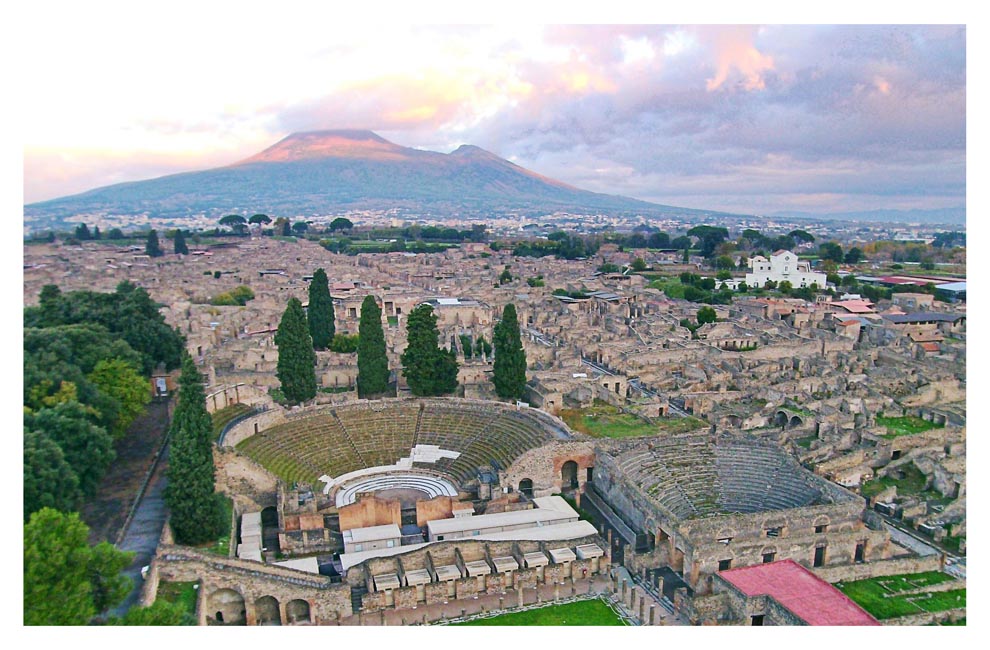

Imagine enjoying a light lunch al fresco when a shattering boom roars through the marketplace of Pompeii.

The ground around you shakes so violently that your meal of fresh fish and red tomatoes ends up in the street. Inhabitants look to Mount Vesuvius, a massive volcano that rises above the city.
It was the summer of A.D. 79 that the volcano erupted to send smoke and toxic gas 20 miles into the air. Almost overnight Pompeii and many of its 10,000 residents perished under the blanket of ash. That volcanic ash of 13-20 feet deep buried the surrounding area. Its blistering hot gases asphyxiated some of the populations who did not escape in time.
The first settlements on this site date to the 8thCentury B.C. when the Oscans, a population of central Italy, founded five villages. Pompeii would cover a total of 65 hectares (160-170 acres). Pompeii in Latin originates from the Oscan word for the number five, pompe, which suggests that the community consisted of five hamlets.
The world’s landscape and the birth of new land comes from volcanoes that have produced more than 80% of the rock on the Earth’s surface today and blasted out craters and building mountains, islands, and plateaus. Eruptions dredge up nutrients and spread them in rock and ash that eventually break down and on land into fertile soils.
The nutrients come from the combined effects of wind, water, and microbes. Taken together they transform the volcanic landscape’s “shades of gray into rusty red and mustard yellow soils that then explode with verdant plant life.”
The forces of an eruption may cause death and destruction in the immediate aftermath of a volcano’s capricious eruption. The hottest lava radiates whitish yellow and then cools to orange, red, and eventually midnight black.
Pompeii was lost and forgotten until 1748. Scientists discovered what happened on the day that buried the town. The sky felt like it was falling and the sun could not be seen. The ash kept falling to block doorways to end with caved-in roofs. Most residents escaped the horror. Bakeries were found with loaves of bread still in its ovens.
Pompeii in the subsequent excavation gives a unique snapshot of Roman life. The city frozen at the moment it was buried. Pompeii was a wealthy town with many fine public buildings and luxurious private houses with lavish decorations, furnishings and works of art. Organic remains, including wooden objects and human bodies, were interred in ash. The graffiti carved on the walls and inside rooms give a wealth of examples of the lost Vulgar Latin spoken at the time, contrasting with the formal language of the classical writers.
By the 1990s, two–thirds of the town had been excavated.
Pompeii is a UNESCO world heritage site and is one of the most popular tourist attractions in Italy with almost three million visitors annually.

